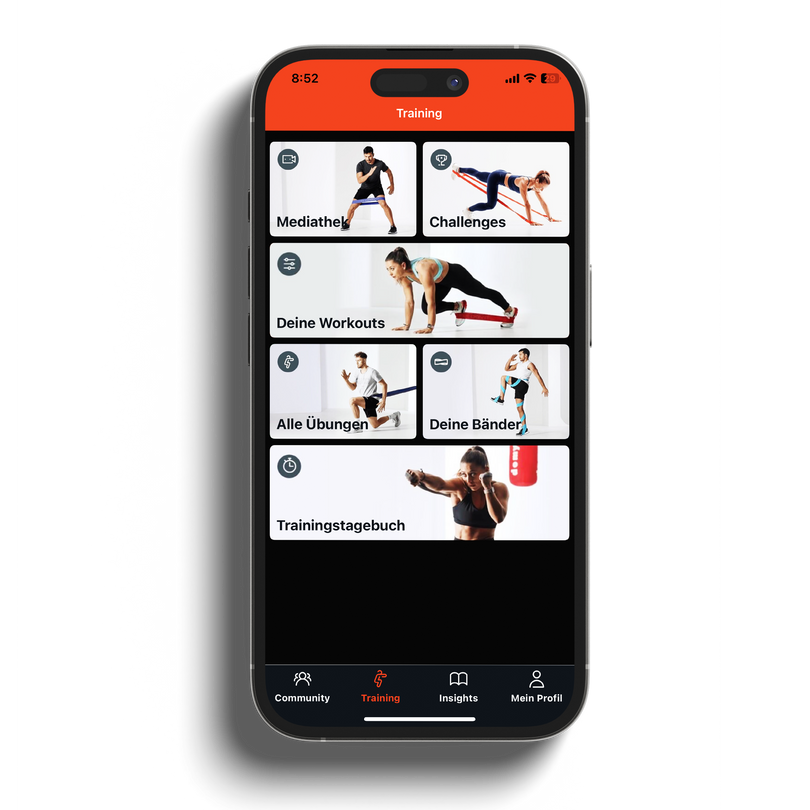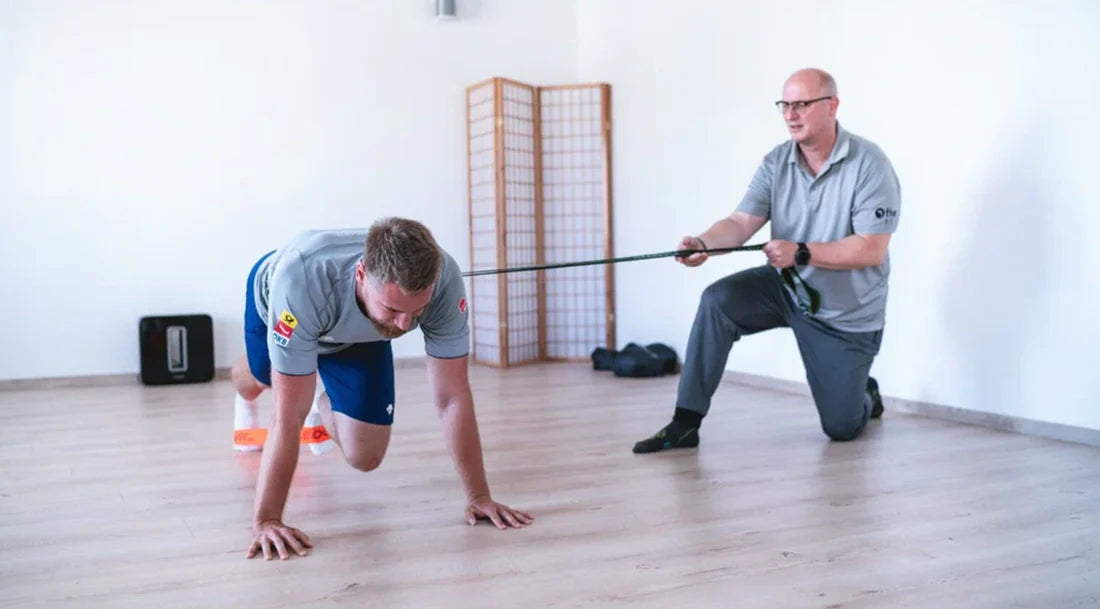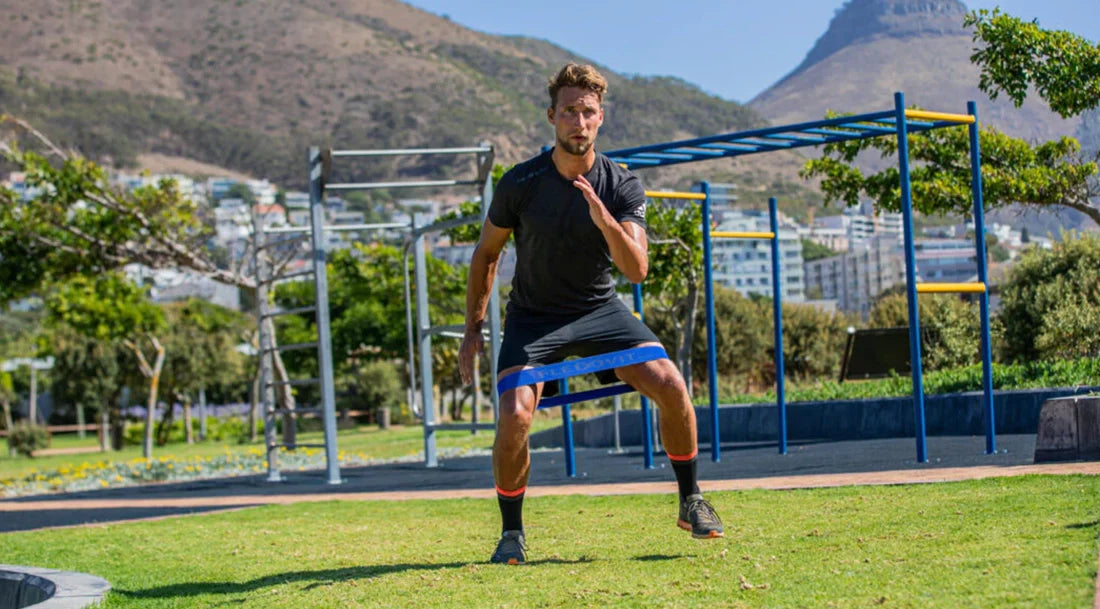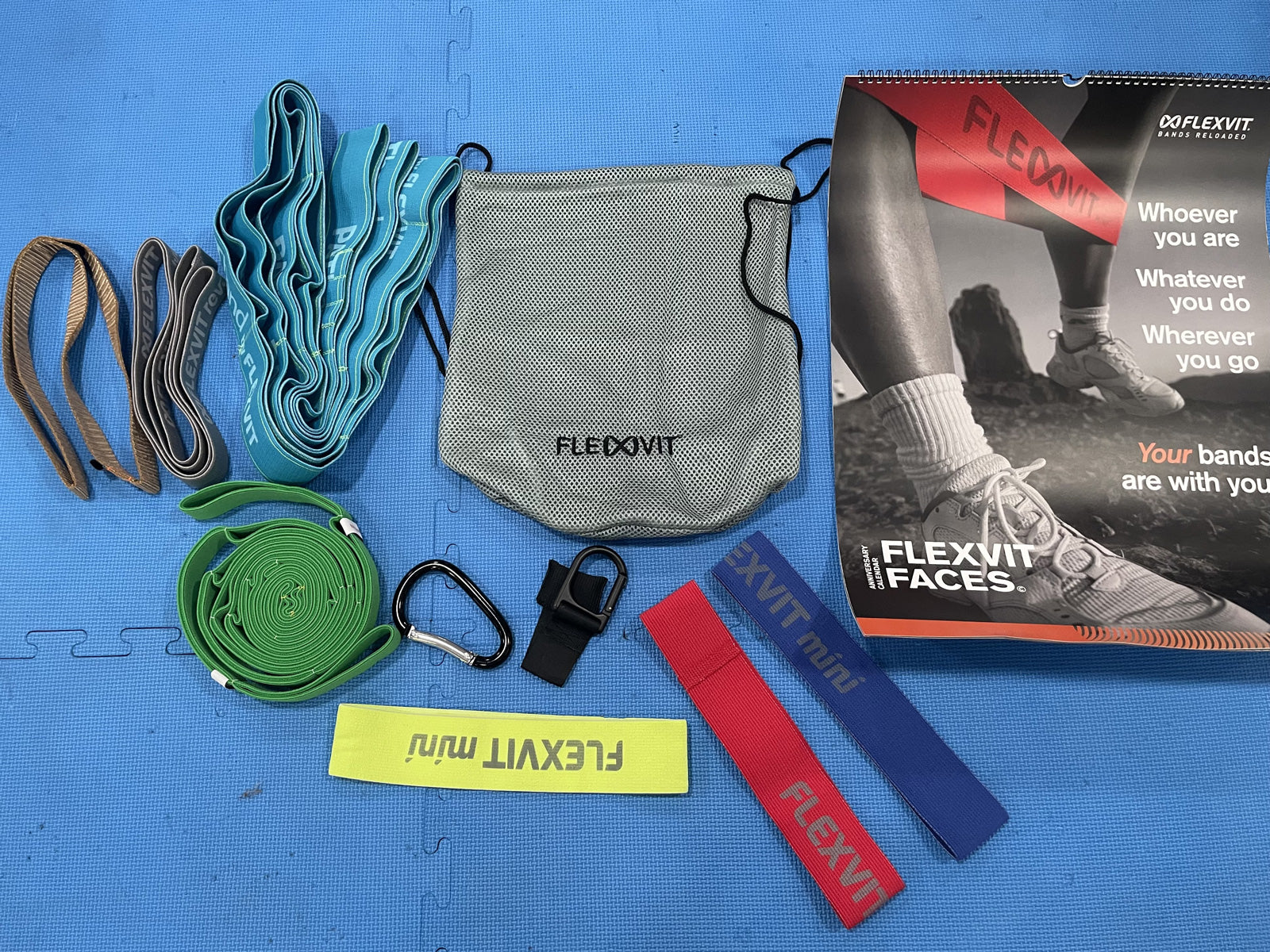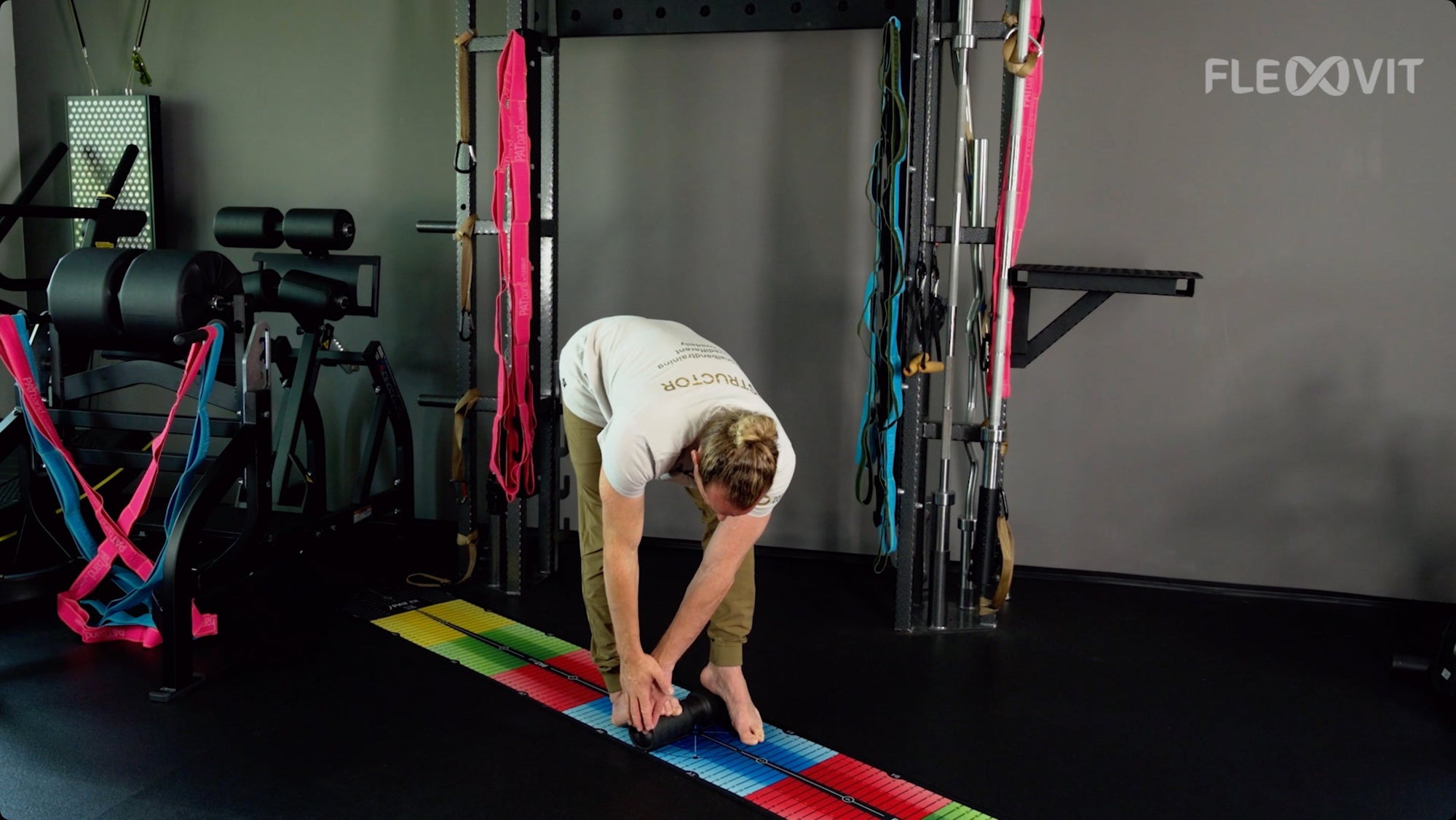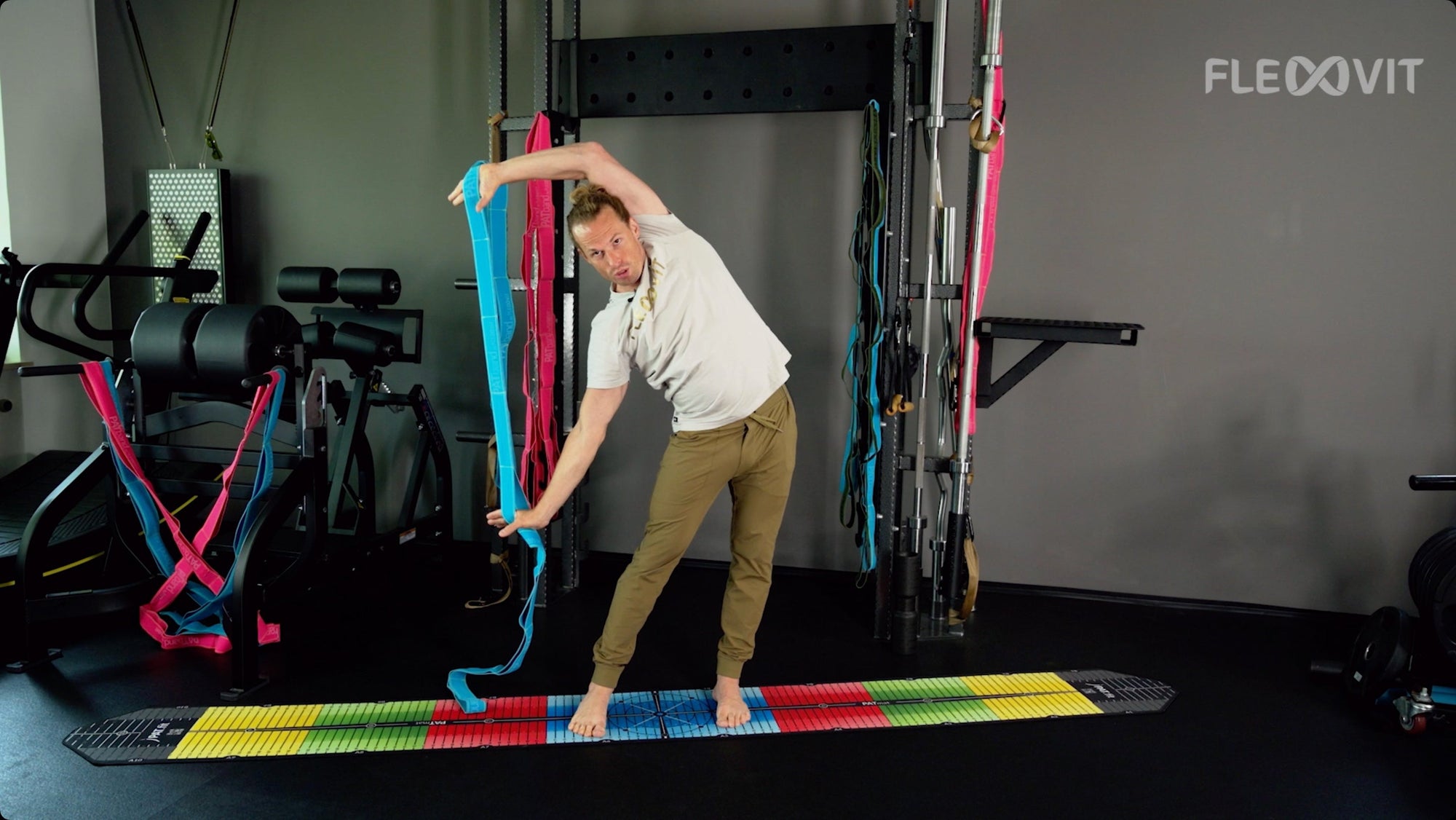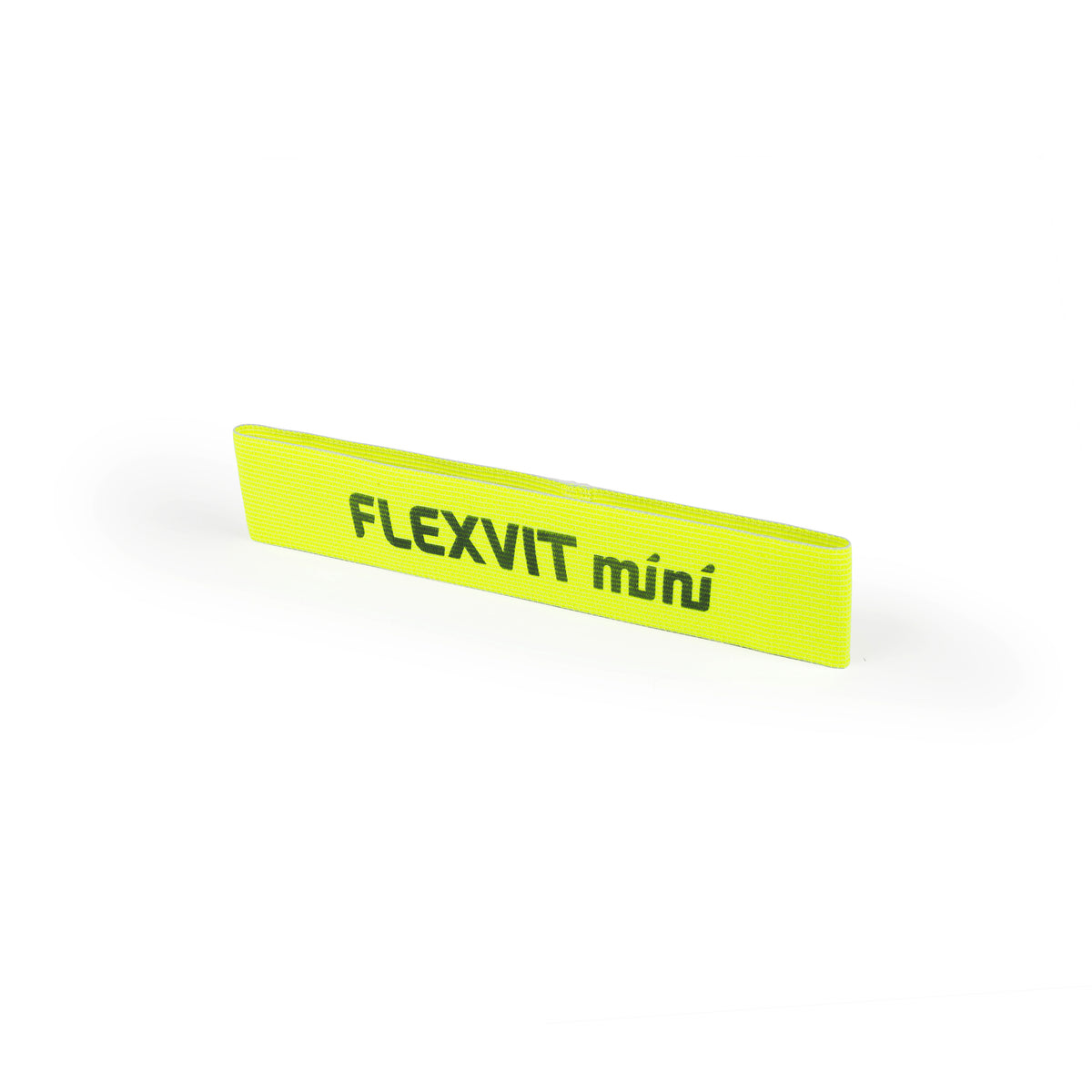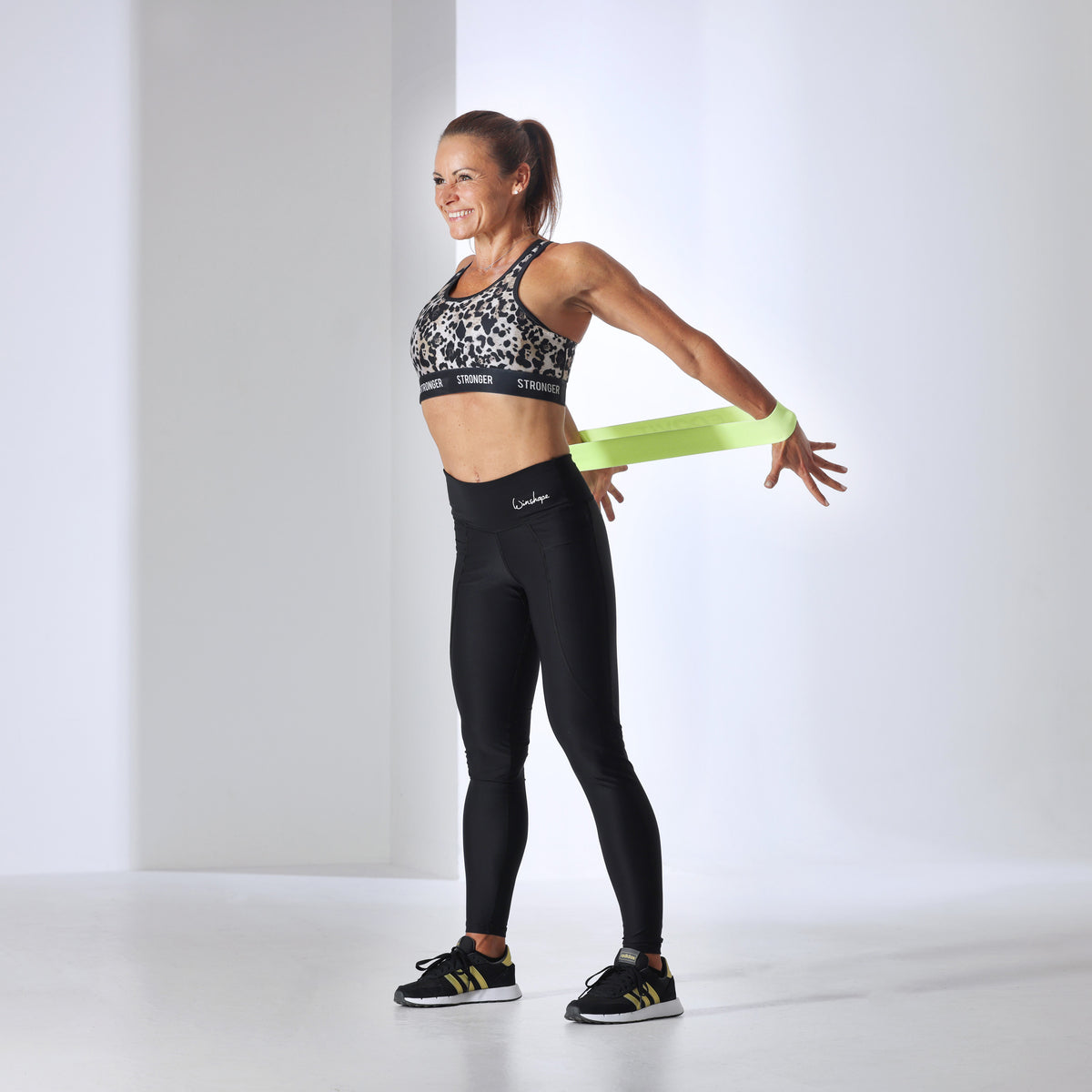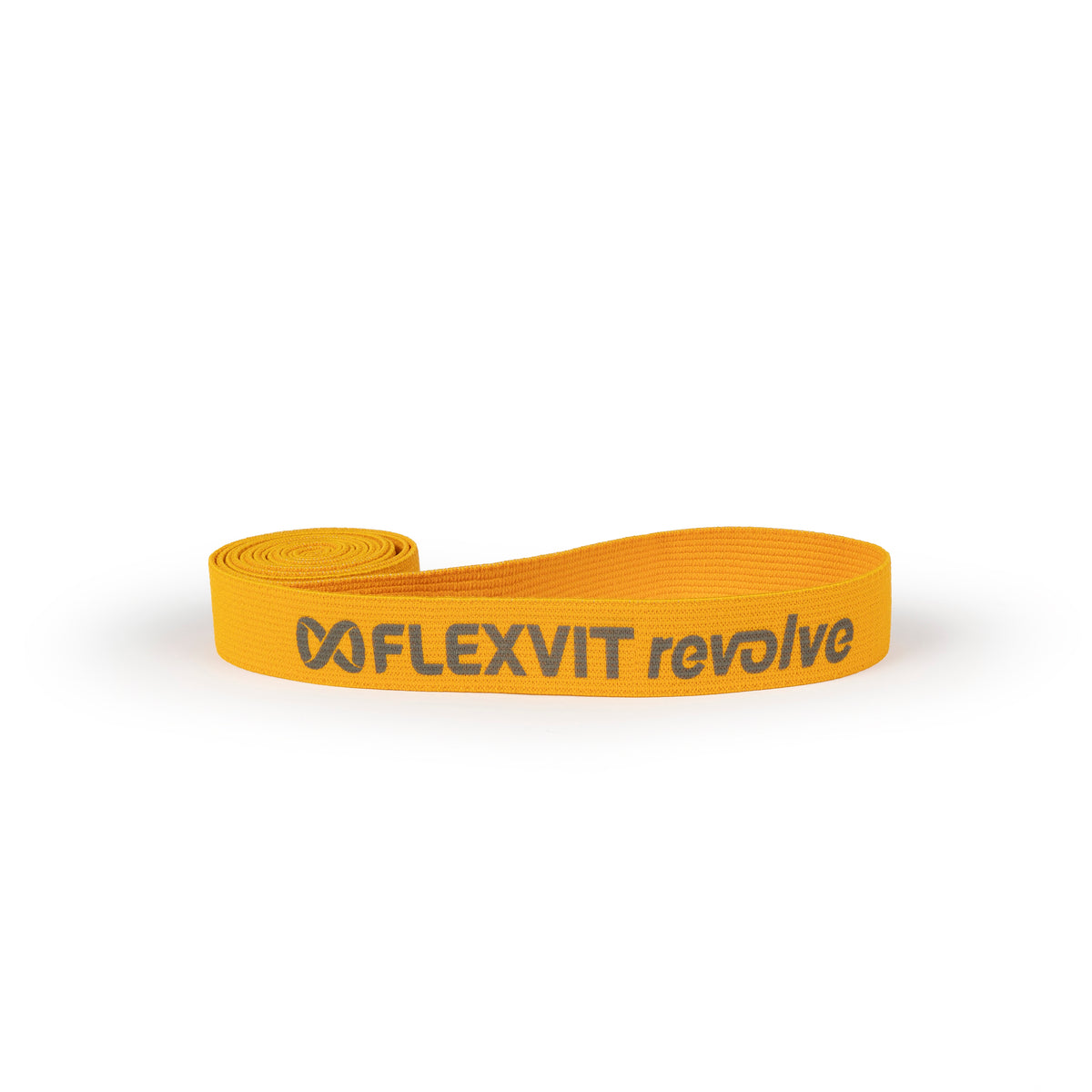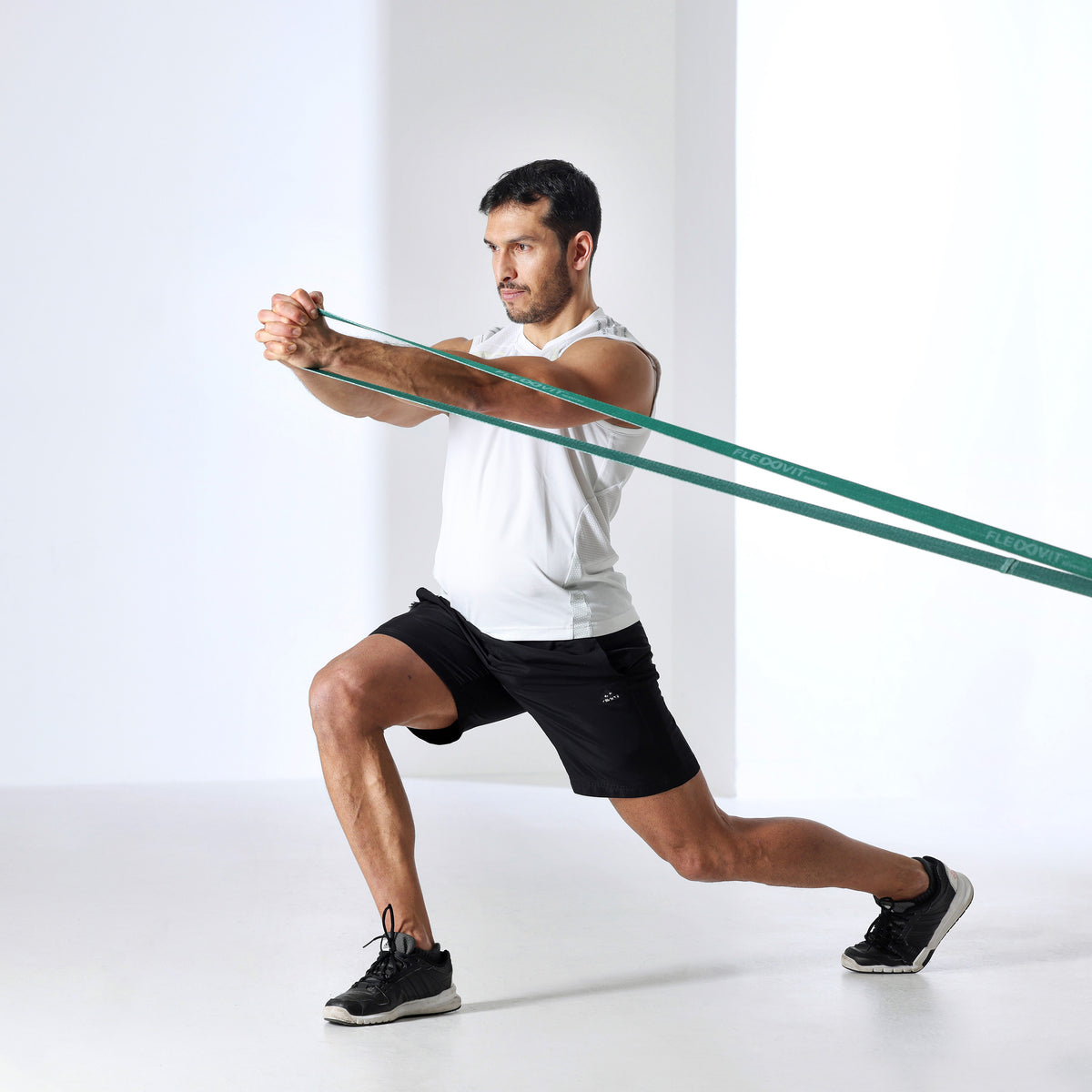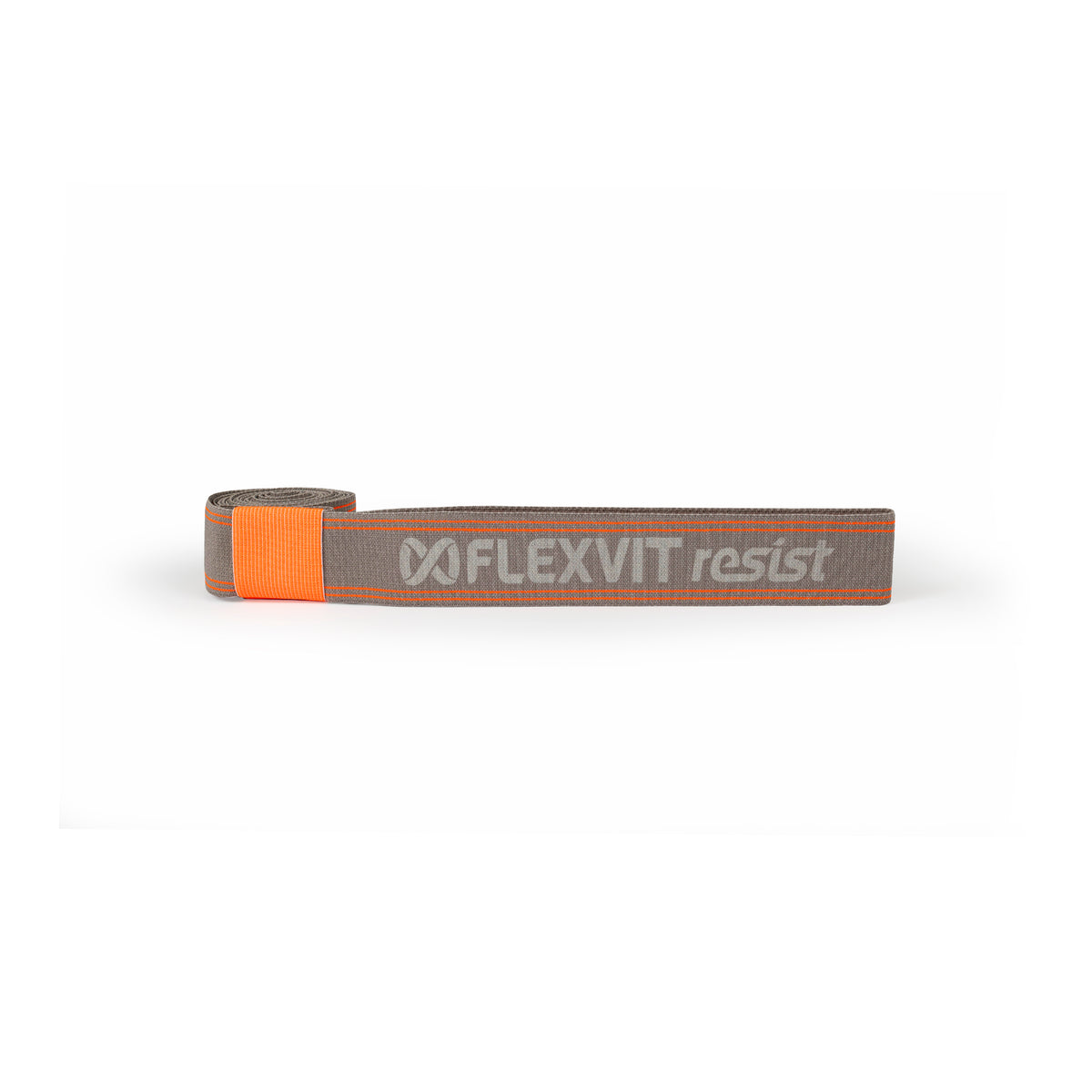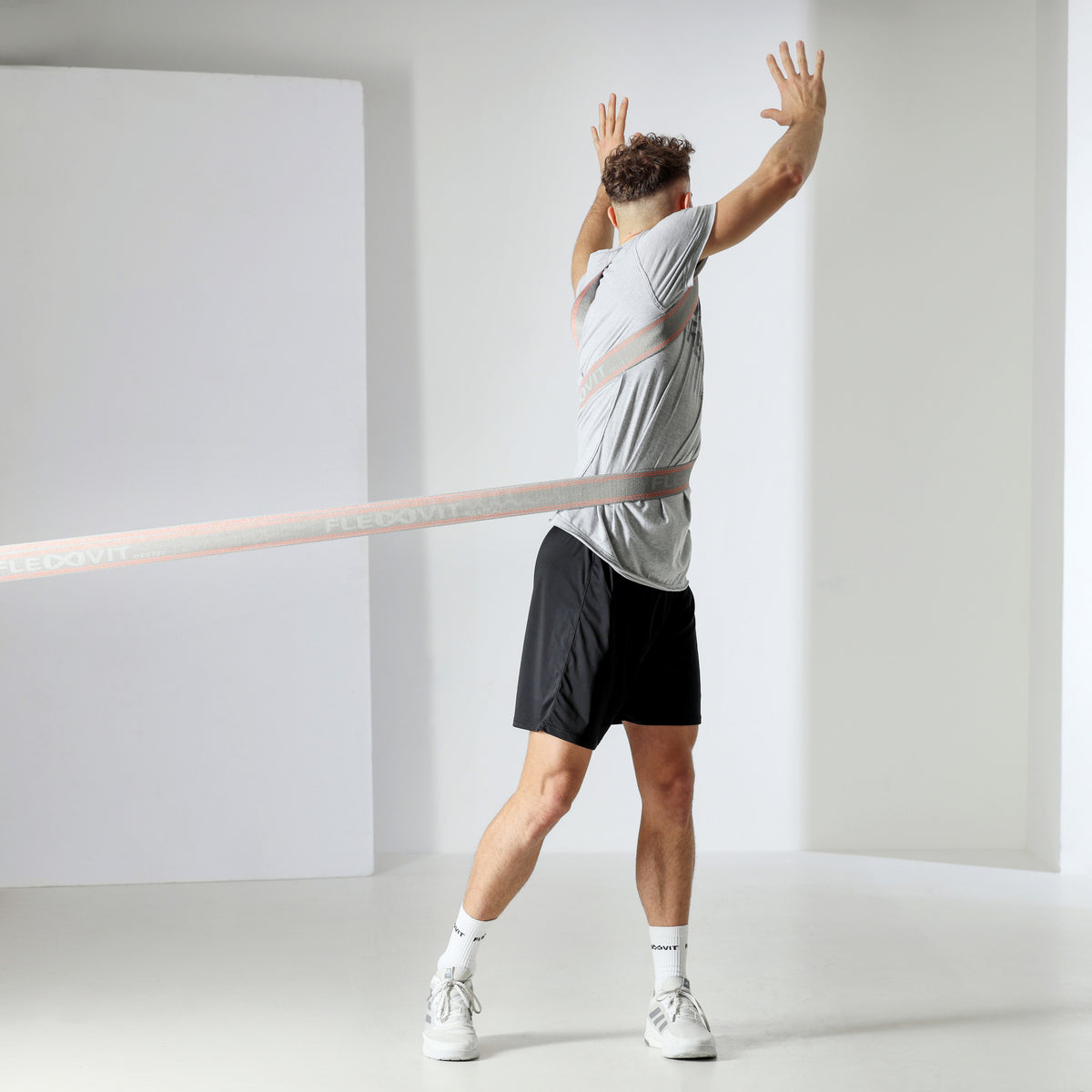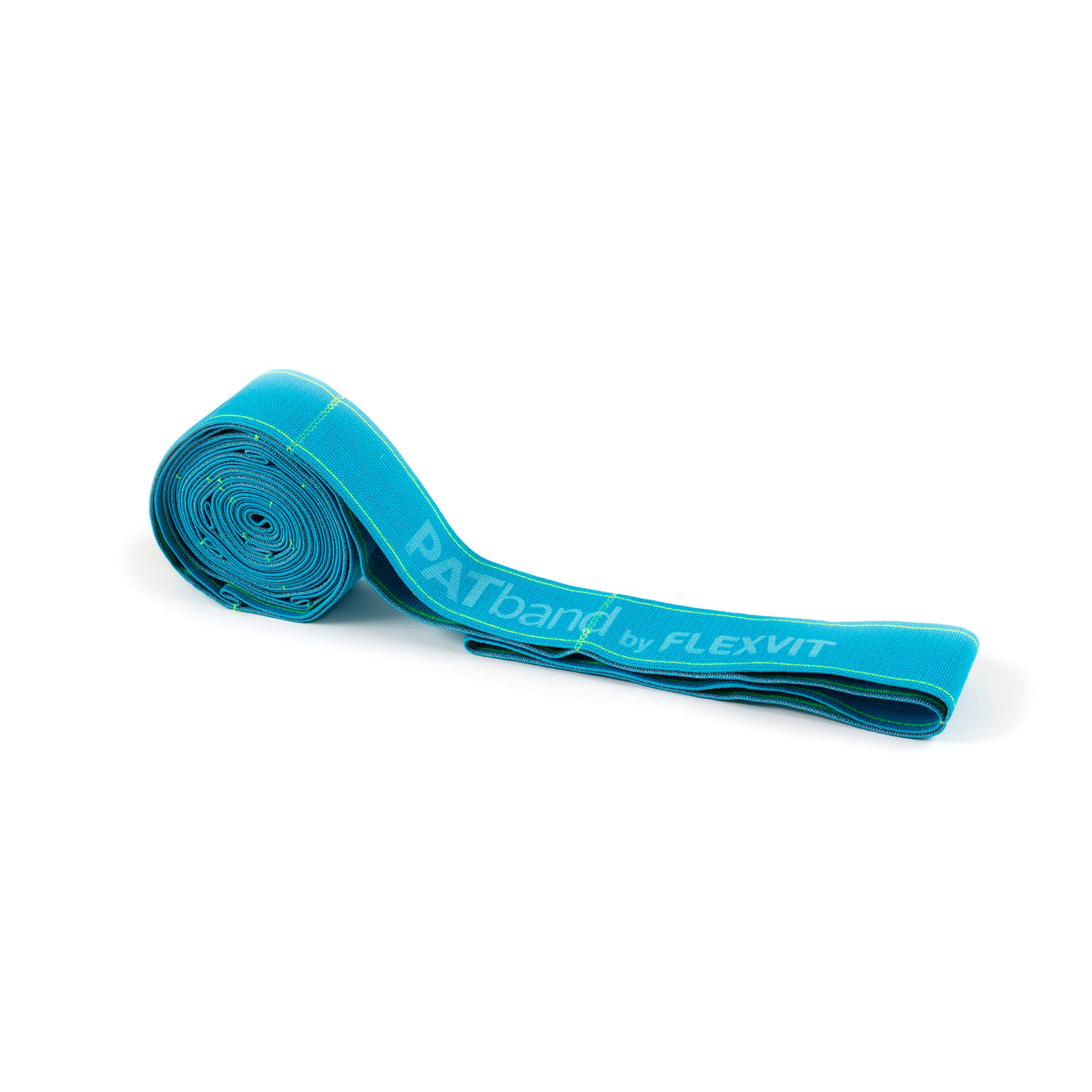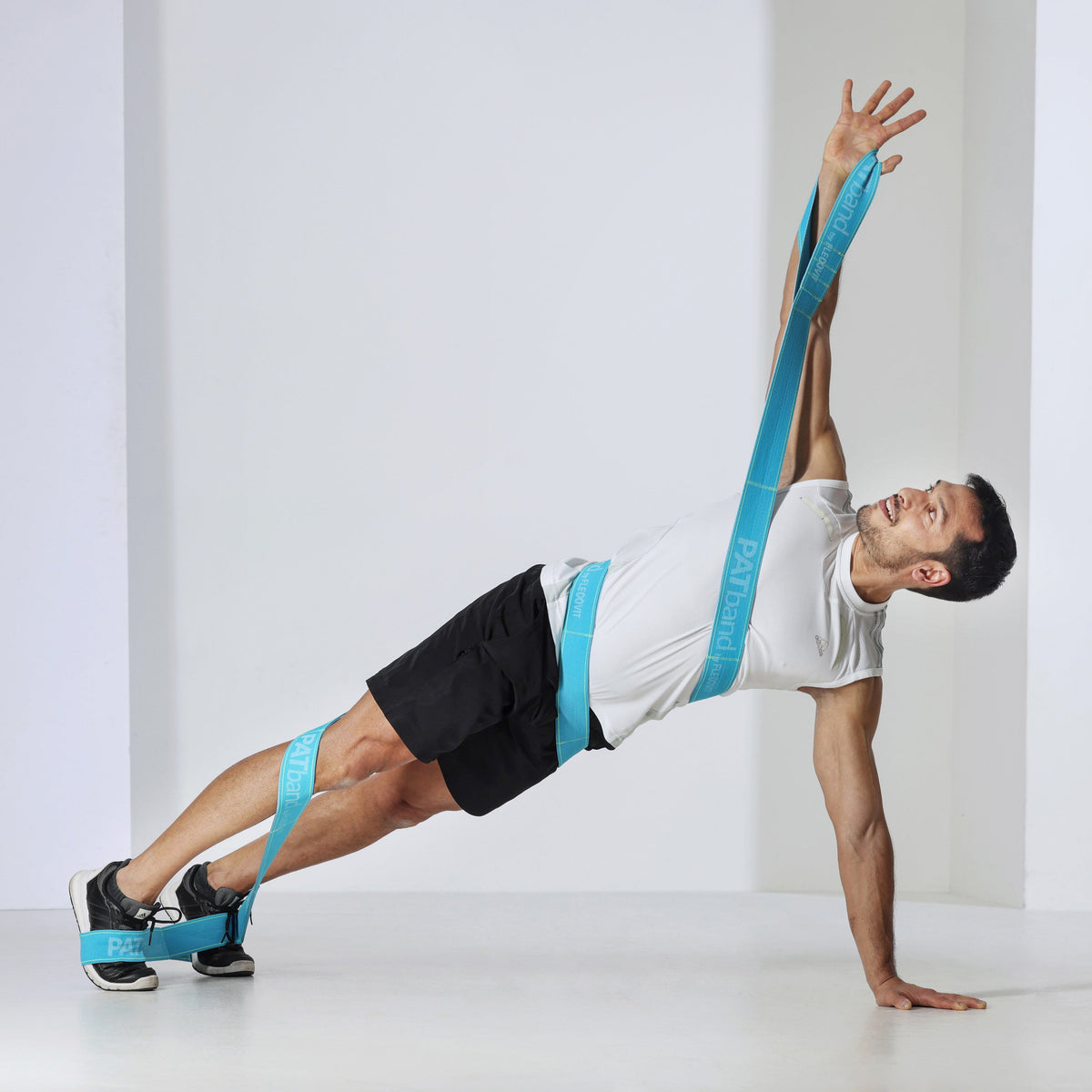Guest post by NeuroXtrain
Elastic bands have been used for some time for functional training, to improve performance, to assist in rehabilitation and to prevent injuries. Unfortunately, for a long time tapes have experienced little development in terms of their technical aspect and composition. Here we present a new fitness band with a new approach that could be very useful for doctors, physiotherapists, patients, athletes, among others.
The PATband
The PATband is a long elastic resistance band (3m long; 16 loops) that was developed by FLEXVIT® in collaboration with Patrick Herzog (sports scientist, trainer at PAT.fit and former Bundeswehr officer). 
Patrick wanted to develop a sophisticated band made of high-quality material because traditional rubber bands are of poor quality and can easily tear - especially when you connect two resistance bands together to make a longer fitness band. With the help of the material and development capabilities of FLEXVIT®, he was finally able to rely on a competent partner.
We wanted to make the best fitness band with the best material for worldwide use.
– Patrick H.
In fact, due to the material composition, its size and its resistance, the PATband offers a wide range of possibilities, especially for functional training. Various professional teams and top athletes already use this band (football, tennis…).
The PATband from FLEXVIT® is available in two resistance levels: heavy (azure) and light (pink). The lighter version is also intended as an exercise band for yoga and as a Pilates band. Patrick himself offers online courses for functional training with the PATband.
Benefits of functional training and elastic resistance
Functional training is a type of training that allows muscles to be strengthened in a manner similar to that used in sports or activities of daily living. Functional training was also used by Engel et al. 2018 defined: as exercises that involve the whole body, as well as universal motor recruitment patterns in multiple planes of movement (e.g. squats, deadlifts, cleans, snatches, pull-ups, vertical jumps and more).
Regardless of the most appropriate definition, functional training has shown promising results, particularly in prevention and improving patients' quality of life. Functional training can bring improvements in:
- Range of motion (ROM)
- flexibility
- mobility
- Muscle strength, endurance and performance
- Neuromuscular processes
Elastic resistance is one of the best types of strength for rehabilitation, training or prevention. In fact, the properties of the sports band provide resistance in multiple directions as the resistance band is tensioned. Yousefzadeh et al. (2018) highlighted this when developing the modified Holmich protocol. A specific set of exercises designed for the rehabilitation of pubic inflammation in athletes is called. Elastic fitness bands force the patient to control the movement from start to finish through the concentric and eccentric forces. The eccentric force ensures strong muscular adaptation (strengthening and preventive neuromuscular effects) of the muscles.
Another advantage of elastic training bands is the progressive resistance during movement: the resistance is light at the beginning of the movement when the muscle is exposed to injury in a stretched position. At the end of the movement it is heavier. This means that the fitness band supports the muscle in its shortened position. This reduces the likelihood of injury during a specific movement compared to a free weight. A resistance band is a must during rehabilitation.
PATband and functional training
As we have already mentioned, the PATband is very interesting for functional training. The length of the band allows the athlete to wrap it around the body. In this way, a rotational load can be generated. This is one of the few ways to train functional training with a fitness band across the entire kinetic chain. This is referred to as a closed body wrap: the band creates an internal/external rotation; the body performs an opposite movement to maintain posture. This functionally activates muscle structures, movement patterns, chains and fascia.
Two types of strengthening can be used:
Integrated movement:
Body wrapping + functional movement (maintaining the correct technique and position when performing the functional movement while counteracting the elastic force).
Isolated movement:
Body wrap + isolated movement against band resistance only.
The band could also be attached to an external anchor point to perform specific pushing and pulling training.
The resistance band can also be used to warm up muscles or stretch. The PATband offers the possibility of PNF stretching (Proprioceptive Neuromuscular Facilitation). Amplitude gains are achieved through short periods of contractions and relaxations of the muscles, combined with static stretching.
Examples of stretching exercises: 

Dynamic valgus correction
Dynamic valgus (= misalignment of the knee joint, also known as knock-knees or bow-legs) is an important risk factor for various injuries such as the anterior cruciate ligament (ACL) or patellofemoral pain syndrome (PPS). It is very important for the therapist to correct it during functional or sport-specific exercises to prevent future injuries.
Exercise 1:
Exercise 2:
Shoulder kinetic chain
In most sports, sport-specific shoulder skills rarely occur as isolated movements at the shoulder joint. Rather, they are the result of force transmission through the entire kinetic chain (from the lower to the upper limbs). For example, the legs and torso generate 50 to 55% of the total kinetic energy needed to serve in tennis.
Exercise 1:
Exercise 2:
Back and hip mobility
Back pain is very common in the general population and also in athletes due to the high training volume and mental stress. Exercise is defined as the best treatment modality for back pain. This particular exercise (very interesting for golfers) combines internal hip rotation with trunk rotation. It promotes mobility in the lumbar and hip areas. The elastic resistance forces the patient to control the movement. (Credits: @pat.fit Instagram )
About the authors 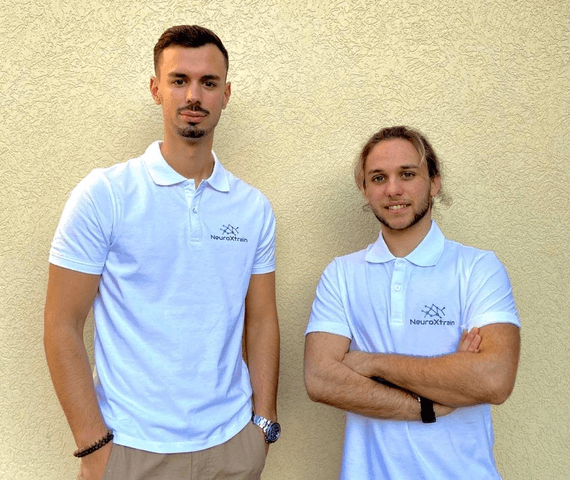
Antoine Fréchaud (left) and Nathan Touati (right) run NeuroXtrain, a website specializing in writing articles and various content on the topics of sports science, athlete rehabilitation, performance and new technologies for athlete health.
You can find more articles from NeuroXtrain in our blog or online.
Practical content such as videos on specific rehabilitation/prevention/strengthening exercises and much more:
Instagram | Facebook | LinkedIn

DISCLAIMER: This content (the description, images and videos) does not constitute medical advice or treatment plan and is intended for general educational and demonstration purposes only. This content should not be used for self-diagnosis or self-treatment of any health, medical or physical condition. This content cannot replace professional advice or medical advice. To be on the safe side, before using exercises to combat specific complaints, you should always consult a doctor or physiotherapist.

